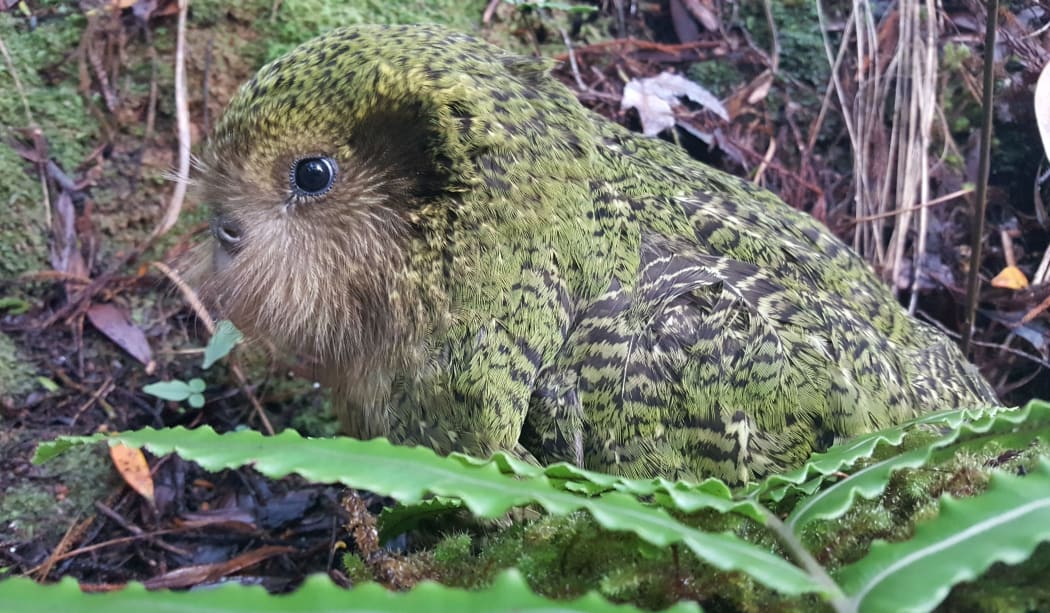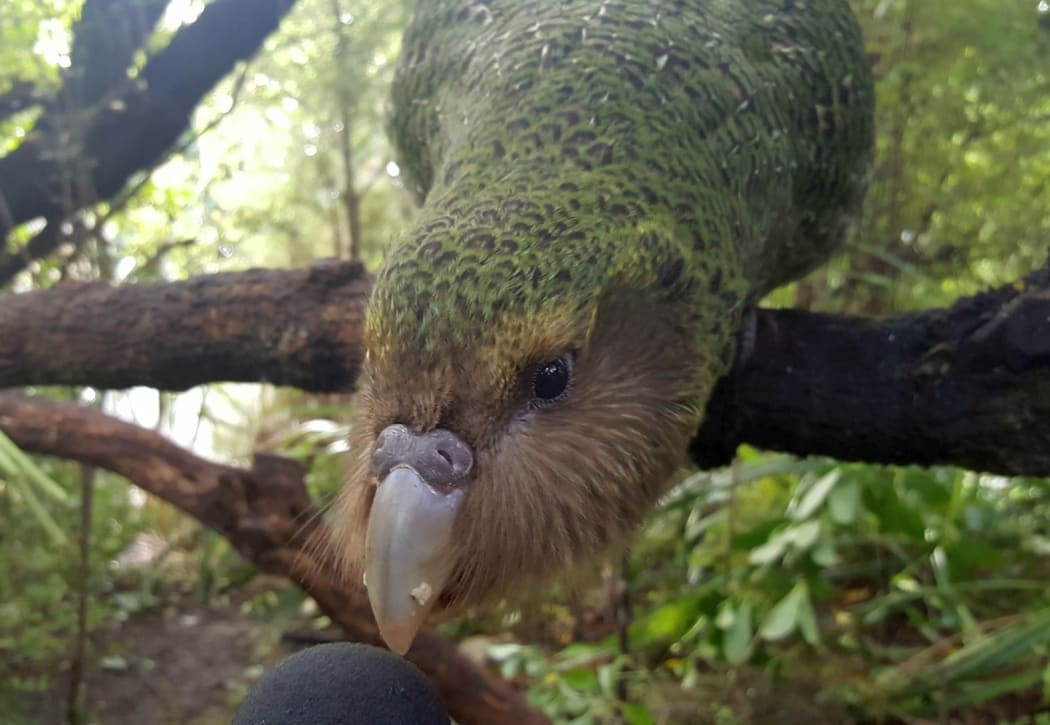Artificial insemination (AI) of kākāpō has succeeded for the first time in a decade, and the Kākāpō Recovery Team at the Department of Conservation is very happy with the results.
Paternity testing has revealed that five eggs were successfully fertilised with inseminated sperm from three males, although two eggs died as early embryos and one chick died at just a few days old.
There are two surviving AI chicks, one of which is fathered by Sinbad, a male containing rare Fiordland genes which contribute important genetic diversity to a threatened species that has low genetic diversity overall.
Paternity testing has also revealed that two young males are star performers in what has been a record-breaking breeding season: Komaru and Horton have each fathered ten chicks.

One of three kākāpō chicks fathered by Gulliver, who has rare Fiordland genes. The chick's mother is Suzanne. Photo: RNZ / Alison Ballance
You can subscribe to the Kākāpō Files as a podcast - for free - at Apple Podcasts, Google Podcasts, Spotify, Stitcher and RadioPublic.
Seven months after the largest kākāpō breeding season on record got off to a racing start, we finally have an answer to an outstanding question: who some of the kākāpō dads are.
Many female kākāpō mate with two and even three males, and in these cases genetic testing has to be used to determine who has fathered the chicks. It is also necessary to use genetic testing to determine fatherhood in the case of females who were inseminated with donor sperm after they had mated naturally.
The paternity testing is carried out by Agresearch using a process called genotyping by sequencing, drawing on genetic markers developed for kākāpō by Professor Bruce Robertson at the University of Otago.
Artificial insemination results
The kākāpō team, with help from German experts from the University of Giesen, carried out 15 artificial inseminations on 13 different females, and succeeded with three females.
Nora was successfully inseminated with Sinbad’s sperm and two of her three fertile eggs were fathered by him (her third egg was fathered by Tutuko in a natural mating). Nora-1-B unfortunately died a few days after hatching. Nora 3-B is still alive but he is currently being treated for an aspergillosis infection.
Cyndy was successfully fertilised with sperm from founder male Merv, but the two fertile eggs died when they were about eight days old.
Margaret-Maree has an AI male chick fathered by Stumpy.

A hand-reared kākāpō chick investigates a RNZ microphone. Photo: RNZ / Alison Ballance
More interesting AI results
As well as revealing who the father is in cases of multiple matings, paternity testing has revealed some unusual results.
Tumeke mated with both Te Atapo and Boss, and for the first time ever in a natural clutch the chicks have mixed parentage: one chick was fathered by Boss and three by Te Atapo.
Kākāpō expert Daryl Eason says the usual situation when a female mates with more than one male is that two thirds of the time the last male who mated will father all the chicks. This year, however, Tutuko and Te Kingi were always the father regardless of when they mated with the female.
Many males didn’t breed successfully while a small number of males were very successful.
The most productive male on Whenua Hou was Komaru. This is surprising as he is only eight years old and it was his first breeding season. He was the youngest male to ever breed and despite this he succeeded in fathering 10 living chicks. Tutuko, Boss and Te Atapō all fathered five chicks each.
On Anchor Island, the most successful male was Horton, in his second successful breeding season, with a total of 10 living chicks. Takitimu and Te Kingi both fathered eight living chicks.
Daryl Eason is disappointed that some of the founder males from Stewart Island who have never bred failed to breed this year. Boss (5) and Basil (4) were the only founder males who produced offspring.
Eight-year-old Waikawa was the most productive female this year – she has five living chicks from a total of eight eggs, and Daryl says this is a very good vindication of the decision to encourage females to nest a second time.
More Fiordland chicks
Sinbad’s brother Gulliver successfully sired his first chicks this year with Suzanne.
Kuia, the sister of Sinbad and Gulliver, produced three chicks this year.
Aspergillosis crisis
Eleven birds are still being treated for aspergillosis, but seem to be responding to treatment. Two birds – Kuihi-2-A and Hinemoa-3-A – have been cured and are being returned to Whenua Hou.
DOC's kakapo team says the worst of the crisis is over and there have been no new cases for several months.
The kākāpō population is currently 142 adults and 72 living chicks.
Find out more
If you would like to know more about kākāpō you can follow the Kākāpō Recovery Programme on Facebook and Instagram. Kākāpō scientist Andrew Digby and Kākāpō Files producer Alison Ballance are on Twitter.
Find the full kākāpō story in the book Kākāpō – rescued from the brink of extinction by Alison Ballance (2018).


